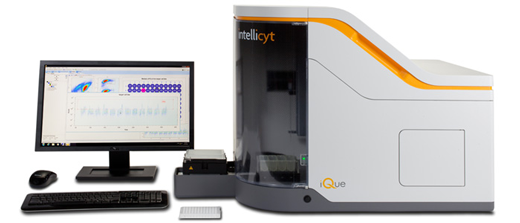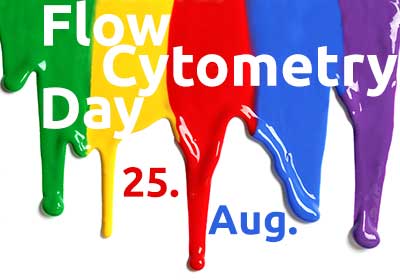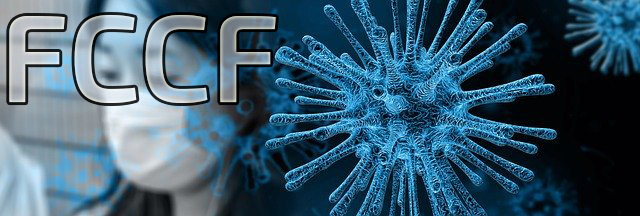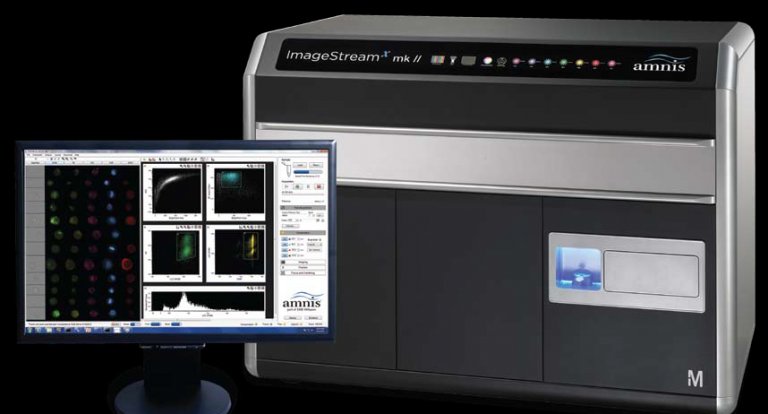Tuesday, August 1th 2017, 10:00am Lehrgebäude Hörsaal
Flow Cytometry is in some way not a classical hard science. There are sometimes several ways to get the answer for the question you asked. However there are some rules that are good to follow. It is in some way like cooking, there a lot of recipes out there for spaghetti sauce. Whereas a simple mistake might spoil your meal.
We therefore offer again a flow cytometry day this year. For the advanced users to refresh their knowledge on current practices in flow cytometry and for the novice users to get a comprehensive introduction to flow cytometry.
We start in the morning with the general introduction to flow cytometry and expand the Agenda to Multicolor, Data Acquisition, Apoptosis and functional cellular assays. You can join us any time you like and there will be ample time for discussion during the sessions and the breaks.
And please leave us a note (fccf@uni-bonn.de), if you want to participate, so that we can take care of coffee and food.
10.00 – 10.30 Introduction: Flow Cytometry Core Facility Bonn by Andreas Dolf
10.30 – 11.15 Flow Cytometry: Principles, Instrument Set up, Optics, Filter, Staining
11.15 – 11.30 Coffee Break
11.30 – 12.15 Multicolor Flow Cytometry; Fluorescent Dyes, their properties, selection, sensitivities
12.15 – 13.00 Lunch Break
13.00 – 14.00 How to optimize Flow Cytometry data acquisition and experimental design to receive optimal results
14.00 – 14.15 Coffee Break
14.15 – 15.00 Apoptosis detection and functional assays: Viability, Vitality, Proliferation….
15.00 – 15.30 Multiplex Cytokine Detection
The ongoing trend in increasing fluorescence options for Flow Cytometry demands for the usage of a broad range of fluorescent dyes. This covers typically the Ultraviolet- (350nm), Violet- (405nm), Blue- (488nm), Yellow-Green (561nm) and Red- (630nm) -laser lines as excitation source. According to the individual experimental requirements the selection of fluorescent dyes towards the target needs to be carefully qualified especially when a multi-color analysis is desired (8 and more color experiment). The different key dyes will be discussed towards their individual characteristic like brightness, molecular weight and application.
Flow Cytometry experiments require careful consideration of many aspects; on the instrument side, the choice of dye, biological context and staining procedures to receive optimal sensitivity. We will have a look into ways to optimize the experiment to receive best resolution by: exclusion of false positive signals, doublet discrimination, reduction of background as well as dead cell exclusion, all with the intention to deliver best possible results. Furthermore we will discuss bead compensation, experimental standardization and fluorescence channel optimization.
Apoptosis is a highly regulated and evolutionary conserved pathway of cell death that plays a critical role in development and maintenance of tissue homeostasis. Apoptosis progression in mammals can be broken down into a number of key steps: induction, activation, and execution. We will have a look at a cellular example and detect the different stages of apoptosis on a time depended manner by demonstrating the different assays associated beginning with mitochondrial changes and to end with controlled cellular disintegration.
Multiple Cytokine Detection is an essential tool for the comprehensive study of biological systems as they are comprised of networks of cytokines, chemokines, growth factors and other related proteins. The parallel detection of multiple cytokines in various sample types becomes more and more essential to understand complex biological responses and processes. Furthermore the resulting information can be used for Biomarker identification that may be further used in Translational medicine or as prognostic markers.
See you and for any questions do not hesitate to contact us
Thomas Bauer (thm.bauer@gmx.de)
and your Core Facility Staff (fccf@uni.-bonn.de)







